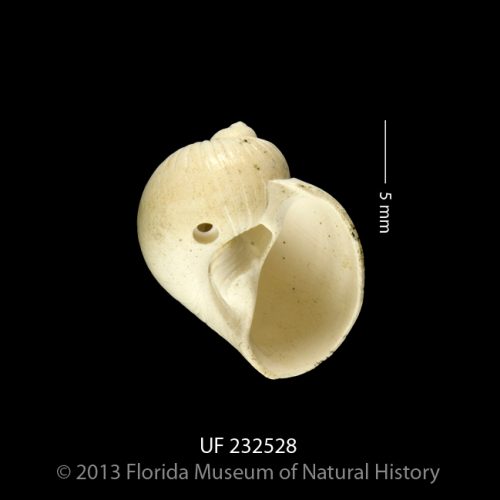
For this rendition of Fossil Friday, we have a predatory snail called Stigmaulax guppiana.
This specimen was found by IVP graduate student Alexis Rojas at the San Judas site in the Gatún Formation. This particular shell is Late Miocene in age. This snail belongs to the family Naticidae (commonly called “moon snails”), a family of snails that bore into the shells of their prey to feed on them. Popular prey items include other shelled molluscs, even other moon snails. Stigmaulax guppiana could have been found crawling across the sands near the shores of places like Panama, Colombia and Florida during the Middle Miocene to Late Pliocene (16-3 mya).
For information on this fossil moon snail, read the “Fossils of Panama” page on it here.